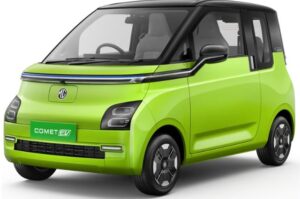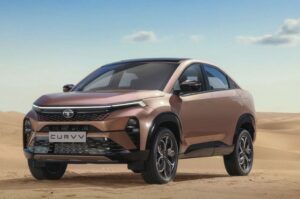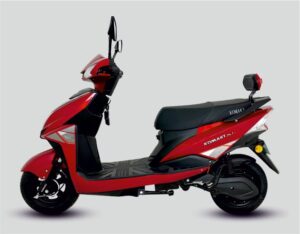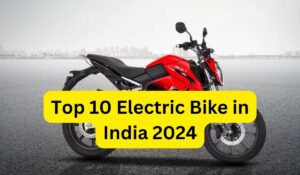
Electric Vehicle (EV) is rapidly gaining popularity in India as an eco-friendly alternative to traditional vehicles. With the Indian government’s push towards promoting clean energy, there are numerous incentives and subsidies available to encourage the purchase of EVs in the country. In this article, we will delve into the government subsidies available for EV purchases in India in 2023 and how you can save lakhs of rupees by taking advantage of them.
Apply for Electric Vehicle Subsidy
Applying for an electric vehicle subsidy varies depending on the country or region where you live. Here are some general steps that may apply in some countries:
Research available subsidies: Before applying, research the available subsidies and incentives for electric vehicles in your country or region. Some subsidies are only available for certain types of vehicles or buyers, so make sure you understand the eligibility criteria.
Purchase an eligible electric vehicle: To apply for a subsidy, you need to have purchased an eligible electric vehicle that meets the program’s requirements. Check with your local dealership or electric vehicle manufacturer to ensure the vehicle you plan to purchase is eligible for the subsidy.
Gather required documents: You may need to provide documentation, such as proof of purchase, vehicle registration, and proof of residency. Check with the program to understand the required documentation.
Submit the application: You can typically apply for the subsidy online or through a paper application. Follow the instructions provided by the program to submit your application.
Wait for approval: Once you have submitted your application, you may need to wait for approval. Some programs have a limited budget and may approve applications on a first-come, first-served basis.
Receive the subsidy: If your application is approved, you will receive the subsidy. The subsidy may be paid directly to you or to the dealership where you purchased the vehicle.
Remember to read the terms and conditions of the subsidy program carefully, as they may have specific rules and requirements that you need to follow in order to receive the subsidy.
Government Subsidy on Electric Vehicles in India
The Indian government is offering a range of subsidies and incentives to promote the adoption of electric vehicles (EVs) in the country. These incentives are aimed at making EVs more affordable and accessible to consumers, and reducing the country’s dependence on fossil fuels. Here are some of the key subsidies and incentives available for EVs in India:
- FAME subsidy: The Faster Adoption and Manufacturing of Electric Vehicles (FAME) scheme provides direct cash incentives to customers who purchase EVs. The amount of the subsidy depends on the type and size of the electric vehicle being purchased.
- GST reduction: The Goods and Services Tax (GST) on EVs has been reduced from 12% to 5%, making them more affordable for consumers.
- Income tax benefits: The government offers income tax benefits of up to Rs 1.5 lakh on the interest paid on loans taken to purchase EVs.
- State-level incentives: Several state governments in India offer additional incentives for the purchase of EVs, such as exemption from road tax, registration fees, and other state-level taxes.
- Customs duty exemption: The government has exempted customs duty on lithium-ion cells, which are a key component in EV batteries. This exemption is aimed at reducing the cost of manufacturing EVs in the country.
- Green number plates: EVs in India are given distinctive green number plates, which entitle their owners to various benefits such as free parking, exemption from toll charges, and priority lanes at toll plazas.
What is a FAME Electric Vehicle Subsidy?
FAME stands for Faster Adoption and Manufacturing of Electric Vehicles, and it is a scheme initiated by the Indian government to promote the adoption of electric vehicles in the country. The FAME scheme was launched in 2015 and has been extended several times since then.
Under the FAME scheme, the government offers subsidies to customers who purchase electric vehicles. These subsidies are provided in the form of a direct cash incentive, which reduces the overall cost of purchasing an electric vehicle. The amount of the subsidy depends on the type and size of the electric vehicle being purchased.
The FAME scheme also provides subsidies to manufacturers of electric vehicles, with the aim of encouraging the production of electric vehicles in the country. The government offers incentives to manufacturers for the production of electric vehicles and their components, which reduces the cost of production and helps to make electric vehicles more affordable for consumers.
In addition to providing subsidies, the FAME scheme also aims to create a network of charging infrastructure throughout the country, making it easier for people to charge their electric vehicles. The government has set a target of setting up at least one charging station every 25 km on major highways. Also initiated the installation of charging stations in various public places, such as shopping malls, airports, and metro stations.
How Will EV Owners Claim FAME Subsidy?
To claim the FAME subsidy, electric vehicle (EV) owners in India need to follow the procedure laid out by the government. Here are the general steps that an EV owner would need to follow to claim the FAME subsidy:
- Purchase an eligible electric vehicle that qualifies for the FAME subsidy. The eligible models are listed on the government’s FAME India portal.
- Fill out the necessary documentation and submit it to the manufacturer or dealer of the electric vehicle. The documentation may include proof of purchase, a copy of the vehicle registration certificate, and the vehicle’s invoice.
- The manufacturer or dealer will then apply for the subsidy on behalf of the EV owner. The application will be submitted to the relevant government agency, which will review the application and determine whether the EV owner is eligible for the subsidy.
- Once the application is approved, the subsidy amount will be credited directly to the bank account of the EV owner. The amount of the subsidy will depend on the type and size of the electric vehicle being purchased.
- It is worth noting that the FAME subsidy is not provided to the EV owner directly, but rather to the manufacturer or dealer of the electric vehicle. The subsidy is then passed on to the EV owner in the form of a reduced purchase price.
Subsidies for Electric Two-Wheelers
The government offers a subsidy of up to 50% of the cost of an electric two-wheeler, subject to a maximum of Rs. 15,000. In addition to this, the government provides an additional incentive of Rs. 7,500 for scrapping old petrol or diesel two-wheelers.
Subsidies for Electric Three-Wheelers
The government provides a subsidy of up to 50% of the cost of an electric three-wheeler, subject to a maximum of Rs. 50,000. In addition to this, the government offers an additional incentive of Rs. 15,000 for scrapping old petrol or diesel three-wheelers.
Subsidies for Electric Four-Wheelers
For electric four-wheelers, the government provides a subsidy of up to Rs. 1.5 lakh, subject to the vehicle’s ex-showroom price. Additionally, the government provides an additional incentive of Rs. 30,000 for scrapping old petrol or diesel four-wheelers.
Additional Benefits of Owning an Electric Vehicle
Apart from government subsidies, owning an electric vehicle comes with several other benefits. EVs are environmentally friendly and produce zero emissions. It makes them an excellent choice for individuals concerned about air pollution and global warming. Additionally, electric vehicles are cheaper to maintain, with lower running costs and fewer components to service.
Electric Vehicle Vs. Petrol Vehicle/Diesel Vehicle – A Comparison
Electric vehicles (EVs) are rapidly gaining popularity as a cleaner and more sustainable alternative to traditional petrol or diesel vehicles. In this article, we will compare the two types of vehicles and explore the benefits and drawbacks of each.
Electric Vehicles
Electric vehicles are powered by an electric motor that is powered by rechargeable batteries. These batteries are typically lithium-ion and can be charged using a standard power outlet or dedicated charging stations. EVs produce zero emissions, making them a more environmentally friendly option compared to traditional vehicles.
Benefits of Electric Vehicles
- Zero Emissions: EVs do not produce any emissions, which makes them a more eco-friendly option compared to petrol or diesel vehicles. This is particularly important in heavily polluted urban areas where air quality is a significant concern.
- Lower Running Costs: EVs are cheaper to run compared to petrol or diesel vehicles. The cost of electricity is much lower than that of petrol or diesel, resulting in lower fuel costs.
- Quieter Operation: Electric motors produce less noise compared to petrol or diesel engines. Resulting in a more comfortable and peaceful ride.
- Lower Maintenance Costs: EVs have fewer moving parts compared to traditional vehicles, reducing the need for regular maintenance.
Drawbacks of Electric Vehicles
- Limited Range: One of the main drawbacks of EVs is their limited range. EVs have a lower range compared to petrol or diesel vehicles, and they may require more frequent recharging.
- Longer Charging Time: Charging an EV can take several hours, which can be an inconvenience for individuals who require a quick refueling time.
- High Initial Cost: EVs are generally more expensive than traditional vehicles. However, this cost is offset by lower running costs over time.
Petrol or Diesel Vehicles
Petrol or diesel vehicles are powered by internal combustion engines that run on petrol or diesel fuel. These vehicles have been the primary mode of transport for several decades and are widely used in most parts of the world.
Benefits of Petrol or Diesel Vehicles
- Higher Range: Petrol or diesel vehicles have a higher range compared to EVs. It allows them to travel longer distances without requiring refueling.
- Quick Refueling: Refueling a petrol or diesel vehicle takes only a few minutes, making it a more convenient option for individuals who require a quick refuel.
- Lower Initial Cost: Petrol or diesel vehicles are generally less expensive compared to EVs. Making them a more affordable option for many individuals.
Drawbacks of Petrol or Diesel Vehicles
- Emissions: Petrol or diesel vehicles produce harmful emissions that contribute to air pollution and global warming.
- Higher Running Costs: The cost of petrol or diesel fuel is higher compared to electricity, resulting in higher fuel costs.
- Higher Maintenance Costs: Petrol or diesel vehicles have more moving parts compared to EVs. Resulting in higher maintenance costs over time.
Both electric and petrol or diesel vehicles have their benefits and drawbacks. EVs are a more eco-friendly option that produces zero emissions, has lower running costs, and requires less maintenance. Petrol or diesel vehicles have a higher range, quicker refueling times, and are generally less expensive. Ultimately, the choice between the two will depend on individual preferences and circumstances. However, it is clear that electric vehicles are the way of the future as the world moves towards sustainable modes of transport.
Conclusion
The government’s subsidies on electric vehicle purchases in India are an excellent opportunity for individuals looking to switch to eco-friendly modes of transport. By taking advantage of these incentives, you can save a substantial amount of money and contribute towards building a greener future for the country.
Read Next Blog:
Common Causes of Whining Noise in the Car





